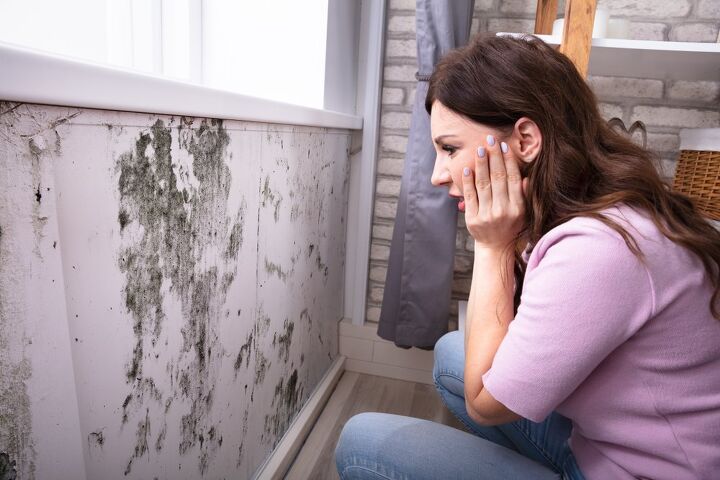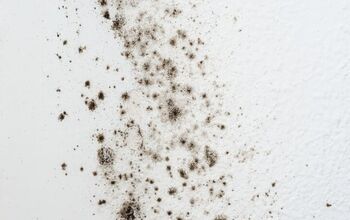Do Mold Foggers Work? (Find Out Now!)

Do you have mold in your home? That only means one thing – you have a moisture problem! The moisture in your home is what feeds the mold that is forming in your house.
This means that in order to prevent mold from forming, it’s essential to check your home for leaks and damps. But what can you do with the molds that are already in your home? One solution many people turn to is mold fogging. But do they actually work?
Generally, mold foggers do work in killing mold and mold spores. And because mold foggers produce “fog,” they can reach into nooks and crannies that you might not easily get to using other mold-killing products.
But before you go ahead and use mold foggers in your home, it’s best to know more about them.
Do You Need Mold Removal Services?
Get free, zero-commitment quotes from pro contractors near you.

What Is A Mold Fogger And How Does It Work?
A mold fogger is a device used to turn mold remedial solutions from liquid to fog. While you can easily put mold-killing solutions into a spray bottle and spray the affected areas, foggers are said to be more effective.
This is because the mold fogger turns the liquid solution into vapors, which can evenly distribute the solution. This means that it can reach cracks and gaps a spray bottle cannot reach.
The fogger uses heat to vaporize the liquid solution that fills the room with a thick fog. Or by what is known as “cold fogging,” which uses air pressure to evaporate the solution.
Are Mold Foggers Effective?
The truth is, you can only see a tiny fraction of the mold that actually exists around you. This is because 90% of the mold is microscopic.
So, if you have mold that is showing up on your walls, then you can guarantee that there is also mold that covers other places in the room that your naked eyes can’t see.
So, simply removing the mold in your sight means you’re not solving the problem. And while there are several ways to kill mold, using the mold fogging method has been effective for many.
What Are The Different Types Of Mold Foggers?
Mold foggers come in two types: thermal foggers and ultra-low volume foggers. Here are the differences between those two types.
Thermal Foggers
A thermal fogger makes use of heat to vaporize chemical solutions. The heated barrel helps to form tiny particles in big numbers, which makes a fog or cloud that can go into cracks.
They usually have a tank that can carry up to 40 ounces of solution using a pump that brings the solution to the heating chamber. The vapor is then released from the front with a nozzle.
Ultra-Low Volume Foggers (ULV)
This is known as the “cold fogger,” which was mentioned above. This device uses air pressure to turn chemical solutions into a fog that is then sprayed. Using ULV sprayers, you are able to alter the size of the particles for different uses.
Can You Perform Mold Fogging At Any Time?
No. Consider mold fogging only after you or a qualified expert has taken all the vital mold remediation steps.
You can begin by fixing the conditions that allowed the mold to grow, such as high humidity or poor ventilation. Then dry off damp areas and get rid of absorbent material that is unsalvageable. That might mean tearing off and getting rid of your insulation, drywall, carpet, and carpet padding.
Fogging can salvage these materials if they might have accumulated some mold spores, but it can’t save them when there has been visible mold growth. Finish off by cleaning up with a HEPA-filter vacuum and a HEPA-filter air cleaner.
Is The Use Of Mold Fogging Regulated?
While mold remedy is not as regulated as other types of environmental cleanup like lead abatement or asbestos, some organizations set industry guidelines and standards.
The Institute of Inspection Cleaning and Restoration Certification (IICRC) creates and maintains a consensus-based standard, and the Environmental Protection Agency (EPA) came up with a remediation guideline. According to IICRC, the vapor-based antimicrobials are ineffective and safe to use for remediation.
The main problem with using the chemicals in this way is the delivery of the antimicrobial, efficiency, and the possible toxicity of the compounds being used. The EPA doesn’t recommend the use of this method UNLESS the product is registered for that specific use.
Tips For Choosing The Right Fogger
Mold foggers are not made equal. Because they are manufactured by different companies and came in different models, some are better than others. Here are some tips for choosing the right mold fogger for your needs:
- Choose a true fogger that generates particles of 50 microns and finer – not a mister that produces only bigger particles.
- Consider the size of the area – handheld foggers might be ideal for small corners, while a static model is better if you need to treat a larger area.
- Make sure to read the directions carefully when choosing fogging solutions.
- When you choose a mold fogging solution, read the directions carefully. Some products are not actually approved for the purpose needed. Some can be harmful to your health.
- Read the fine prints. Some products only cover the mold but don’t immediately kill it.
- See if the product works on the surface you want to treat like drywall, wood, fabric, or concrete.
- It’s best to choose a product that dries easily.
- Be careful in using water-based botanical products. Mold spores are hydrophobic and repel water. This means that fungicides in a water-based product may not kill mold spores.
How To Use Mold Foggers
Not only choosing the best product is important. The way you use the mold fogger itself significantly affects the job results.
The correct use depends on the equipment. So, make sure to always follow the directions from the manufacturer.
- Prepare the area to treat by putting away or covering electronics and items that might be damaged by moisture, like paper and delicate fabrics. It also helps to plan where you’ll start and end as this will help you not miss a spot.
- Put the mold fogging solutions in the fogger tank and adjust the settings. Keep in mind that the finer the mist, the less risk of damage there will be.
- Let the fogger run for about 10 minutes. For a stationary fogger, turn the equipment by a one-quarter turn every 2 or 3 minutes to prevent overflow. If you are operating a handheld fogger, hold it 18” to 24” away from the surfaces that you want to treat. On the other hand, if you are using a stationary fogger, you must be no less than 18” away from any surface.
- Turn the mold fogger off, leave the room, and allow for the fog to dispel for about 30 minutes.
- Dry off the area by opening windows or turning the fans on. Leave again until the area is completely dry.
Why Do You Need To Clean The Area Before Fogging?
If you fog a surface without cleaning it first, the remaining soils can still contribute to the development of destructive microbes and may cause further contamination. The remaining soils may also serve as a wall, which prevents the disinfectant from getting to the surface and doing its job.
Remaining soils on the surface might affect the active chemicals in a cleaning product, which impact their efficiency. If the surface is carefully cleaned first, the fogging becomes more effective.
Getting Rid Of Mold Spores
The main purpose of this process is to get rid of mold spores from your home. Unfortunately, soil and dust are able to guard the mold and circulate it in the air.
Fogging without cleaning beforehand can provide you with a false sense of safety. This is why clearing the room of all the items that can collect dust is important.
Fogging a room may kill microorganisms in plain sight, but it will not necessarily address the airborne spores. Professional mold killers will adequately seal the room and use negative air pressure and scrubbers to get rid of the airborne particles.
Do You Need Mold Removal Services?
Get free, zero-commitment quotes from pro contractors near you.

Final Words
Despite the IICRC’s statement that mold foggers are not effective, many people find the use of mold foggers beneficial in preventing the growth of this type of fungus. But then again, even though they work for many, keep in mind that their role in mold remediation is a minor one.
If you want to stop completely preventing mold from developing in your home, you must find the source of the problem! Meaning searching and fixing a water leak, getting rid of stagnant water, and controlling high humidity levels.

Coming from a family of woodcarvers, Cyril has always been fascinated with wooden interiors and home decorating. While she followed the path of writing as her career, her interests in home improvements still remain.
More by Cyril Balahadia



























